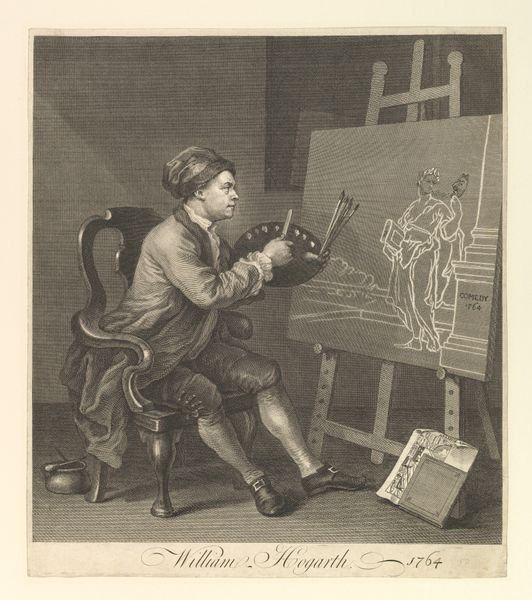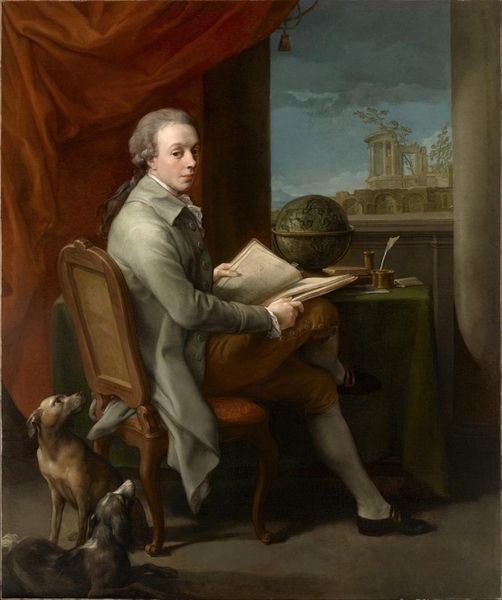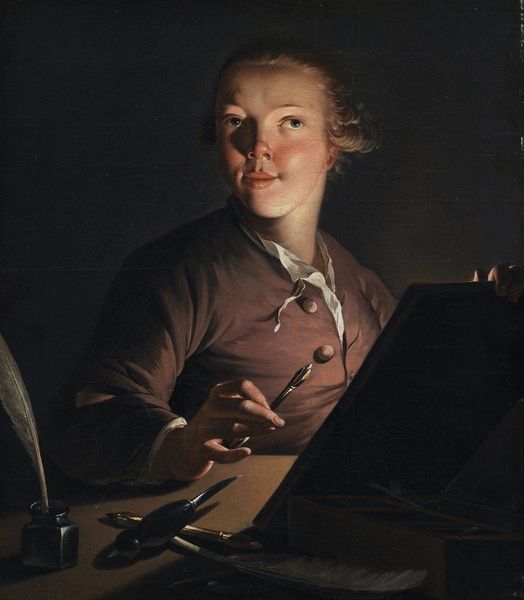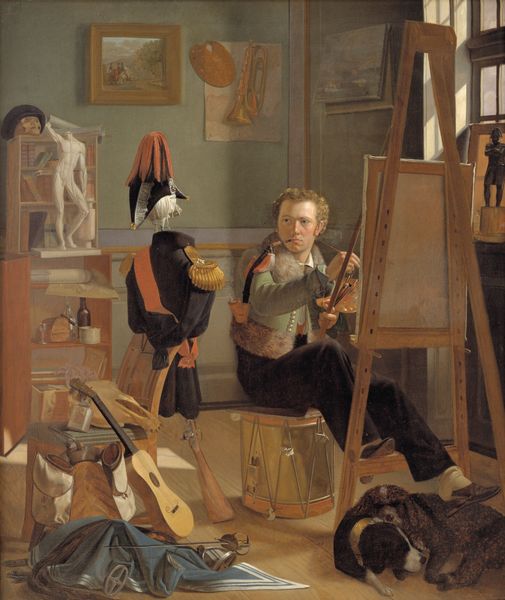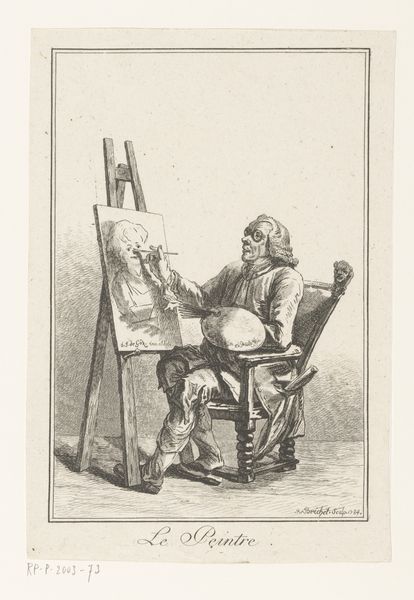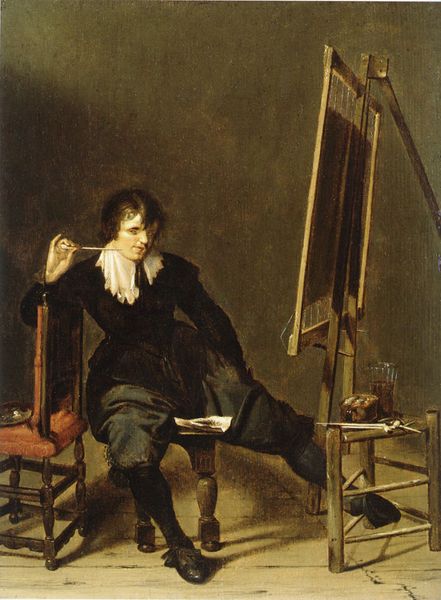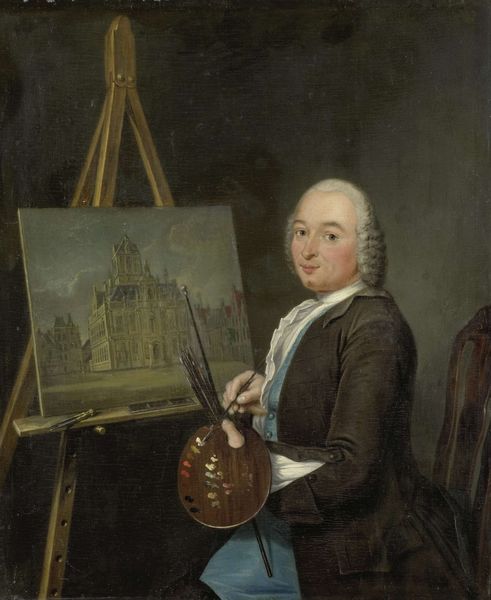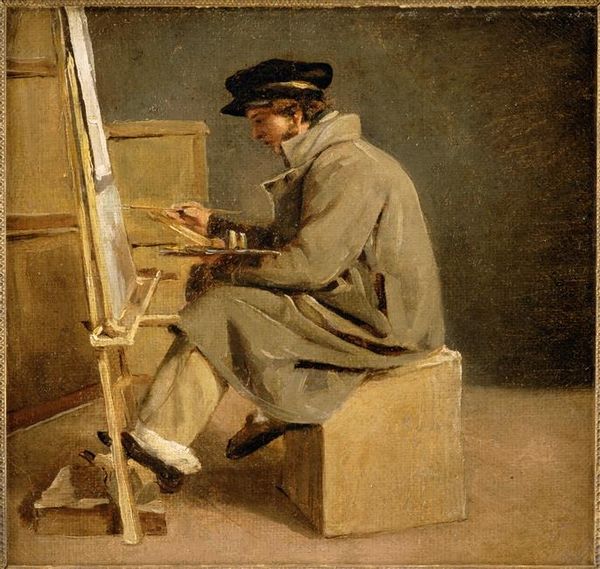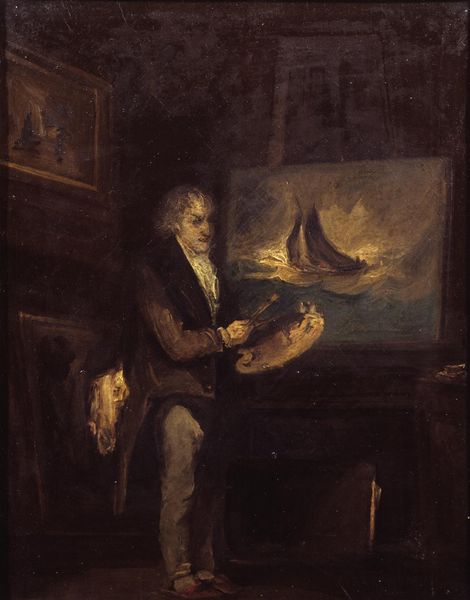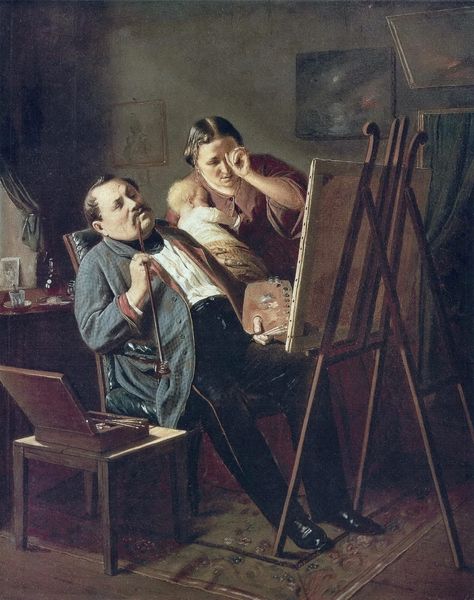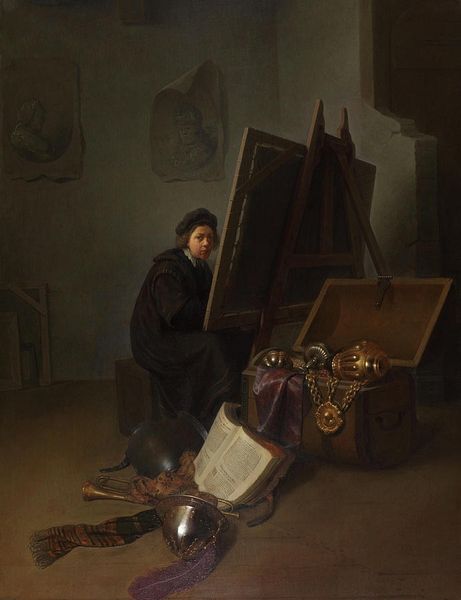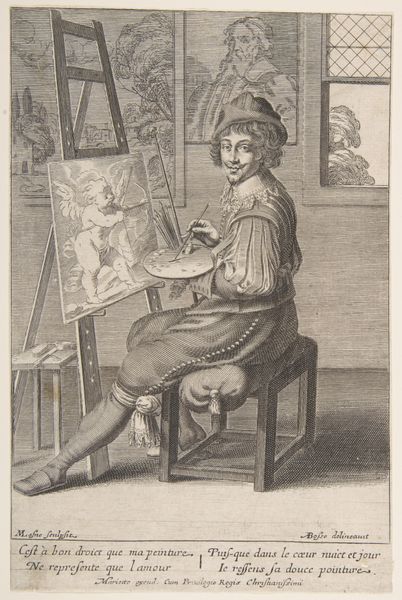
painting, oil-paint
#
portrait
#
self-portrait
#
baroque
#
painting
#
oil-paint
#
genre-painting
#
history-painting
#
academic-art
Copyright: Public domain
Editor: We’re looking at “Hogarth Painting the Comic Muse” by William Hogarth, done in oil paint. It looks like a self-portrait of sorts. He’s shown mid-creation, palette in hand. I’m curious about how he saw himself as an artist and how that intersects with the kind of paintings he produced. What do you see here? Curator: What strikes me is Hogarth's choice to depict himself at work. We see the materials of production - the canvas, the easel, the palette, the brush. It highlights the labor involved in artmaking, a stark contrast to the Romantic notion of the artist as a divinely inspired genius. Look at the roughness of the sketch on the canvas versus Hogarth's meticulous depiction of his own attire. Does this contrast tell us something about the status he's trying to achieve through the labor of art? Editor: So you are saying that even within his self-representation, he emphasizes the process, almost demystifying the artistic creation? Curator: Exactly! He’s foregrounding the physical and material aspects of his craft, disrupting the idea of art as purely intellectual or inspired. He seems conscious of constructing an identity as a working artist, maybe to elevate the status of British painting compared to the established European styles. How do you think the context of early 18th-century England influenced his approach? Editor: That’s fascinating. Thinking about the burgeoning middle class and their patronage, maybe he's catering to a market that appreciates craftsmanship and skill? Curator: Precisely. His emphasis on accessible, moralizing subjects and the materiality of production might be a conscious effort to appeal to a new, commercially driven art market. It certainly challenges the established academic hierarchy. Editor: This has changed my understanding of the work. It’s not just a portrait; it’s a statement about art’s purpose and its production. Curator: Indeed. By examining the material conditions and the artist's conscious presentation of his labor, we uncover a deeper social and economic dimension to Hogarth's work.
Comments
No comments
Be the first to comment and join the conversation on the ultimate creative platform.
